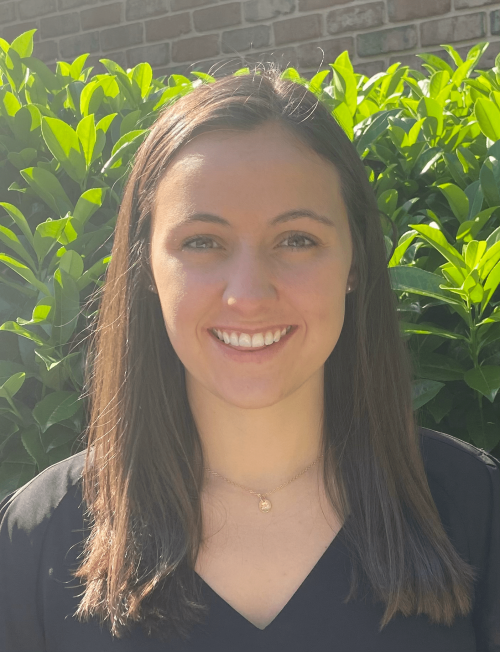
By Carmen Lessley
Over two days, September 28 and 29, Duke's Polis: Center for Politics and the Duke Math Department executed a conference entitled “Redistricting and American Democracy” overviewing recent trends, policy, and implications of redistricting.

Redistricting is the process of redrawing political districts from the municipal to congressional level. The Constitution mandates that people are counted every ten years and that congressional districts are reapportioned to fit the population.
This conference was excellently timed as the 2020 census is currently informing the redistricting process across the county and the drawing of maps is now underway. The night before the conference began, Oregon became the first state in the country to enact new congressional maps.
Though in most cases redistricting only occurs every ten years, mid-decade redistricting happened several times in North Carolina in the past decade with some members of the Durham community residing in three different congressional districts without ever changing residences.
Gerrymandering has multiple definitions, and we heard many throughout the conference. I tend to think of gerrymandering as manipulating the map-drawing process to fit a goal that is not outlined in the rules and official priorities. In many cases, this looks like political gerrymandering to draw districts to help one party or the other increase their representation above what is reasonable.
Over the course of the conference, we heard many different suggestions to end the practice of gerrymandering such as eliminating the use of political data, increasing transparency, increasing consideration of communities of interest, using objective data like county lines, compactness, contiguity, and more. In the panel, “Building Bipartisan Support for Redistricting Reform,” panelists Art Pope, the Chairman of the John William Pope Foundation and Tom Ross, the President of the Volcker Alliance and Co-Chair of North Carolinians for Redistricting Reform argued for the use of objective data like county lines, compactness, and contiguity, as well the prohibition of the use of political data. Though the effectiveness of many of these policies are highly debated and rarely clear cut, the goal of fair and representative maps is worthwhile. But how do we get there?
Many of the guests on various panels emphasized legislative reforms, but there was also a focus on the history and future of the involvement of the courts. In 1962, the US Supreme Court ruled that districts must be drawn to proportionally represent the population. Since this ruling, the courts have been deeply involved in redistricting.
The conference keynote speaker was Judge James Wynn, who authored the decision in Rucho v. Common Cause ruling that partisan gerrymandering was unconstitutional and ordered the redrawing of North Carolina’s congressional maps. This decision was later overturned by the Supreme Court who said that these political questions are outside of the court’s purview. Judge Wynn spoke on “The Role of Judges and Justices in Redistricting.”
Judge Wynn argued that this Supreme Court decision engaged in judicial activism in this case as they failed to apply relevant judicial tools and standards in a transparent matter, even though they self-characterized the decision as “judicial restraint.” Judge Wynn and others pointed to intent as a key factor in determining where the line is in gerrymandering. Though courts have a long history of involvement, most agreed that legislation is the ideal pathway for reform.
In the opening session, “The National Redistricting Landscape,” panelist David Wasserman of the Cook Political Report said that the jury is still out on the effectiveness of these reforms. He argued that as long as there are districts, there is a possibility to produce partisan outcomes. Co-panelist Kathay Feng, the National Redistricting Director of Common Cause, argued that federal policy is the best way to apply reform across the board. However, Professor Guy-Uriel Charles of the Harvard University Law School agreed that the outlook on federal reform is bleak.
Though federal legislation was briefly discussed, most agreed that given the filibuster and current makeup of Congress, true federal redistricting reform is not likely to come about, at least for this cycle. Instead, we should focus on state and local reforms that may be more likely to pass. These reforms can go a long way to reduce the impact of gerrymandering.
In an ideal world, I think redistricting reform must come about from the federal level since the majority leaders of states are unlikely to enact fair redistricting reform that could hurt themselves or their party. However, I agree with the analysis that federal redistricting reform in the near future is unlikely at best so for now, the local and state level is the best place to start.
So, what can students do about it? The last panel entitled “Where do we go from here?”, panelists Hilary Harris Klein from the Voting Rights Council and SCSJ, Jo Nicholas, the state director for the League for Women Voters of North Carolina, Jane Pinsky of Common Cause of North Carolina, and Lehka Shupeck, the state director of All on the Line advised students to engage at the local levels and learn about the municipal, county, and state legislative redistricting processes. They encouraged students to write a letter, submit testimony, share submitted testimony on social media, and even host a public forum for the Durham student community. Things are most likely to change when self-interest is at play, and high levels of engagement can change the self-interest calculation and bring transparency and accountability to the process.
This year, the attention is on redistricting, and Duke students can play a role.
Carmen Lessley is a senior majoring in Public Policy Studies and minoring in Political Science and History. She is currently researching the impact of redistricting method and partisanship on incumbency reelection in state legislatures for her honors thesis.
